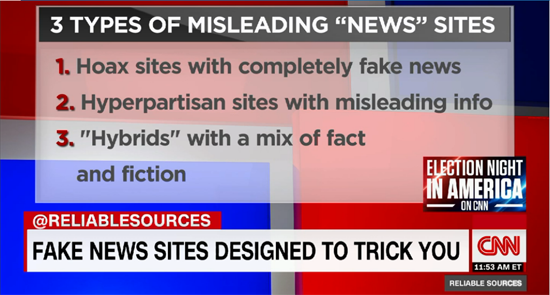Fact checking anonymous warnings
This was first published at the Manila Times, Sunday Business & IT on September 16, 2018 , a day after Typhoon Ompong hit the Philippines.
Fake news or misleading stories have something in common that make them successful. Firstly, they appeal to our emotions.
Secondly, they play into a worldview, which is similar to the appeal to our emotions. Stories that confirm our worldview are often the ones we are willing to share the most. I fell into this trap in the past. If I believed strongly on an issue, I tend to share news that fits my worldview. I learned that the best course of action is not to share right away. Do a triple check.
A few days ago, the Philippine Atmospheric, Geophysical and Astronomical Services Administration (PAGASA) debunked Monday text messages about the potential super typhoon Mangkhut saying “it’s a hoax. We don’t know yet how strong the typhoon will be”. The “Severe Storm Advisory” was shared mostly in Viber chat messages and I spotted the same in one of my group chats. The fact is Typhoon Neneng was already happening that Monday morning not Mangkhut. The fictional part is that it contained very detailed weather listing such as the time, sea, and air travel cancellations , which was way ahead of the typhoon’s entrance to Philippine Area of Responsibility (PAR) expected to enter on a Wednesday.
The creator of this viral text purposely mixed a little bit of fact and a lot of fiction, a hybrid. One practice is to pull out a factual report from mainstream news sources and to “spin it,” giving it an entirely new meaning.
First Draft , a nonprofit coalition addressing challenges to trust and truth in the digital age list 7 types of misinformation and disinformation:
1. Satire or parody—no intention to cause harm but has potential to fool.
2. False connection—When headlines, visuals or captions don’t support the content
3. Misleading content—Misleading use of information to frame an issue or individual.
4. False context—When genuine content is shared with false contextual information
5. Imposter content—When genuine sources are impersonated.
6. Manipulated Content—When genuine information or imagery is manipulated to deceive
7. Fabricated content—New content is 100% false, designed to deceive and do harm
Claire Wardle, of First Draft News says fake news is associated with “misinformation” and “disinformation”. Wardle explained the difference between misinformation, where information is false but the person circulating it believes it to be true, and disinformation, where the information is also false and those responsible are fully aware.
Which type of misinformation or disinformation did this viral text exhibit?
Is it false context (when genuine content is shared with false contextual information ) or manipulated content (when genuine information or imagery is manipulated to deceive)? The intent was to deceive and to create alarm that one would share it easily. When I called out that the message was a hoax, my friends said that they heard it on TV. Yes, Mangkhut was on TV but did they pay attention to the details? Monday morning was still too early for PAGASA to issue alerts.
Today , we live in a world where facts are buried by propaganda, deliberately false or misleading news, and, of course, people’s own filter bubble. What can we do now? Here are a few reminders from media literacy sites to take note when faced with a news or text message that play into your worldview.
• Independent sources are preferable to self-interested sources.
• Multiple sources are preferable to a report based on a single source.
• Sources who Verify or provide verifiable information are preferable to those who merely assert.
• Authoritative and/or Informed sources are preferable to sources who are uninformed or lack authoritative background.
• Named sources are better than anonymous ones.
The best course of action is to check official government weather and disaster management agencies . Check PAGASA’s page at bagong.pagasa.dost.gov.ph. You can also monitor Japan Meteorological Agency (JMA) and Joint Typhoon Warning Center (JTWC). JTWC usually has higher numbers in their readings because it measures in 1-minute intervals compared to the 10-minute average readings from PAGASA and JMA.
Aside from being alert to weather bulletins, a family needs to have a preparedness plan during emergencies and a Go Bag or survival kit, which can just be a huge backpack or a large plastic pail with the basics that you need like food, water, medicines and packing in a transistor radio, power bank, flashlights, extra batteries, some clothes, and blankets. Preparedness begins at home and we must plan to help ourselves to minimize the impact in our household. Remember, in the initial hours of a disaster, we should not expect the disaster agencies, rescue teams, and law enforcers to be our first responders because it is possible that many of them will themselves be affected.
It is good to be prepared for emergencies but it is crucial for social media users to triple check sources and fact check before sharing alarmist news.




